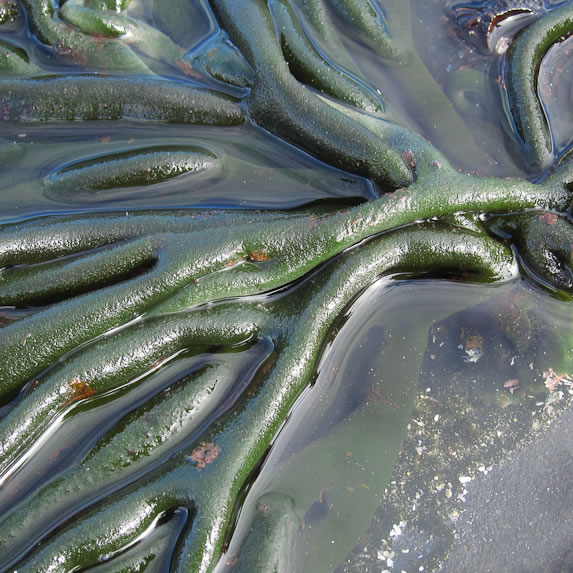Velvet seaweed

Community type
Habitat type
Rocky reefs, kelp beds and inter-tidal zone
Velvet seaweed as its name suggests, has a furry texture making it soft to touch. Upon close inspection its furry appearance is due to a dense covering of tiny hairs. It is abundant on sheltered and moderately exposed reef in the low intertidal zone from 0 -2 metres depth, and also occupies large tide pools that are permanently filled. Velvet seaweed is dark green with forked branches, and it grows on reef surfaces as well as other hard surfaces like bivalve shells. Sea slugs graze on velvet seaweed by piercing it with their radula (like a very rough tongue) and sucking out cellular juices. The surface of the plant may also be covered by small epiphytic algae. Its native range is coastal Japan, but it has established itself worldwide probably though unintentional transport in ship ballast, and with shellfish.
